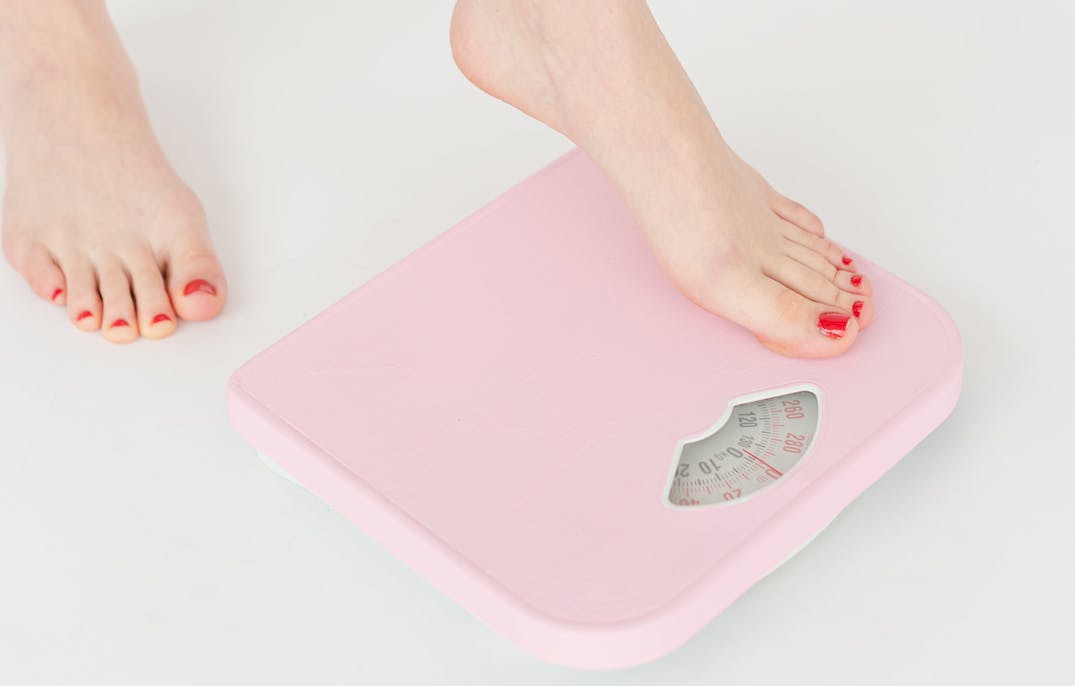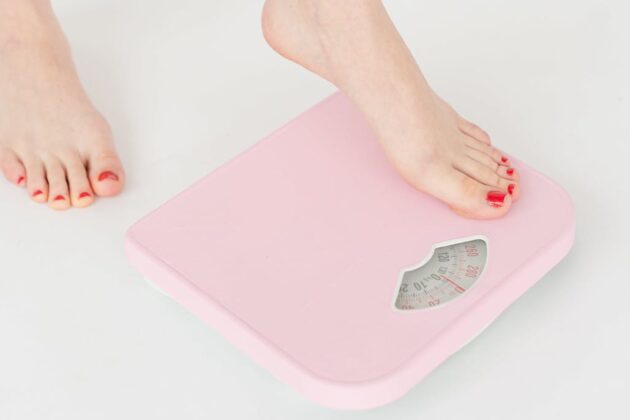How to Create a Weight Gain Meal Plan
While losing weight is a common challenge for many, gaining weight can be equally difficult. You may wish to gain weight if you are currently underweight due to illness or trying to build muscle mass.
If you’re trying to gain weight healthily, it takes mindfulness and intention. Gaining weight is not just about eating more but choosing nutrient-dense healthy foods that will lead to a sustainable and healthy increase on the scale.
The first step to gaining weight is to figure out how much you need to eat. This is different for everyone.
Next, you may want to start tracking your foods to make sure you are eating enough to see that increase in weight.
This guide goes over the steps to take and everything else you need to know about creating a healthy weight gain meal plan.
Step 1: Figuring out how much you need to eat
Healthily gaining weight requires an increase in calories, but it’s important to know how much for it to be sustainable. Eating a calorie surplus will not always give you the results you are looking for, and it can be difficult to keep up with in the long term.
To gain weight reasonably and maintainably, increase your calorie intake by 300-500 calories per day to start seeing a slow and steady incline on the scale.
To increase your calories, it’s helpful to know how much you should be eating to maintain your weight. To find this out, you can use online calculator tools such as this TDEE calculator.
This calculates your specific calorie range based on age, gender, height, weight, and activity level. This will give you your maintenance calories which you will then increase by 300 to 500 for weight gain.
For example, if your maintenance calories are 1,900 per day, you will want to eat between 2,200-2,400 calories per day for your calorie surplus. This increase in calories should lead to a healthy weight gain rate of about one to two pounds per week.

Find a dietitian covered by insurance
90% of Zaya Care patients pay $0 for dietitian visits
Step 2: Choose or create your weight gain meals
Healthily gaining weight requires an increase in calories, but not just any calories will do.
Sure, indulging in calorically dense foods such as ice cream, French fries, and fried chicken could likely lead to rapid weight gain, but this could lead to other health concerns in the long run.
Instead, it’s ideal to choose nutrient-dense foods. These foods are a good source of calories and provide a lot of nutrients (as opposed to empty calories from sugar and fat).
Some examples of nutrient-dense foods include:
- Olives and olive oil. Olives and olive oil are a rich source of monounsaturated fats which can help improve HDL levels and boost heart health.
- Cheese and other full-fat dairy products. Full-fat dairy products are a rich source of protein, fat, and essential nutrients for bone health.
- Nuts and seeds. Nuts and seeds contain a good source of protein, heart-healthy fats, fiber, and essential vitamins and minerals, which can protect against conditions such as heart disease and diabetes.
- Avocado. Avocados are a rich source of monounsaturated fats, fiber, and a large variety of essential vitamins, minerals, and antioxidants. They are calorie-dense, incredibly versatile, and provide several health benefitsincluding boosting cardiovascular health.
- Fatty fish (such as salmon or tuna). Fatty fish provide a hearty dose of omega-3 fats, and protein, and are a good source of calories. Omega 3s may help reduce inflammation and promote heart health.
- Beans and legumes. Beans and legumes provide a rich source of high-fiber carbohydrates, protein, and essential B vitamins. They are naturally low in fat and very versatile in cooking.
Consider incorporating these foods into your meals and snacks for a healthy boost of calories without eating in excess or worrying about increasing your risk for health conditions.
Below is an example of a day of meals using high-calorie, nutrient-dense recipes with ingredients mentioned above.
- MattsFitChef High Calorie Oatmeal. This breakfast includes whole grain rolled oats and peanut butter for a calorie-dense, delicious, and nutritious breakfast. Best of all, this recipe can be altered based on your calorie goals and can be as high as over 900 calories per serving.
- EatingWell Almond-Honey Power Bars. This hearty snack is a whopping 250 calories per serving and includes a variety of healthy, nutrient-rich ingredients, including nuts, seeds, and dried fruits.
- Nutriciously’s Vegan Thai Potato Curry. Great for lunch, this recipe is easy (gotta love a one-pot meal) and also includes nutrient-rich, vegan-friendly foods like chickpeas, coconut milk, and potatoes. One serving provides nearly 500 calories and can be dressed up with add-ins of your choosing.
- GoodFood Creamy Fish & Leek Pie. You can make comfort food for dinner without it being unhealthy. This wonderful creamy fish and leek pie is rich in fatty fish and savory cheese to help you boost your calories while also getting more omega-3s.
Step 3: Go shopping!
Now that you know how many calories you need to eat to gain weight and which foods are best to add in, it’s time to go shopping!
To get the most out of your shopping trip, make sure to go with a plan. Consider your food preferences and what meals and snacks you want to have throughout the week to support your weight gain goals.
Be sure to read food labels when picking your items to make sure you are choosing good options. Even though the goal is to gain weight, you still want to be mindful of ingredients like added sugars since high amounts of these can increase the risk of health conditions.
The American Heart Association recommends limiting added sugars to no more than 6% of your calories per day (or 24 grams for women and 36 grams for men). A helpful rule of thumb is to try to choose food items with five grams of added sugars or less per serving.

Find a dietitian covered by insurance
90% of Zaya Care patients pay $0 for dietitian visits
Step 4: Prep your weight gain meals
Now that you have your meal plan and all your ingredients, it’s time to get prepping. This is the fun part!
During this time, you may be exploring different recipes and snack ideas that are not a part of your usual diet. To make sure you are eating the right foods in the correct calorie range, consider keeping track of your meals.
You can do this with several online apps such as MyFitnessPal or LoseIt. When you input your foods and recipes into the app, it shows you the calorie and macronutrient breakdown so you can make sure you are hitting all your target goals.
While there is no need to track macros specifically during this time, some prefer to know what ranges they should be in. The average person should consume 45-65% of their calories from carbohydrates, 10-35% from protein, and 20-35% from fats.
Ensure the meals you choose align with your weight gain goals and lifestyle. It can be fun to explore different recipes, but make sure it’s still convenient and enjoyable so you will stick to it. Consider getting other family members involved to help keep you accountable.
Step 5: Track your calories daily
Although it’s not something you need to do forever, tracking your daily intake can provide valuable insight into your diet and allow you to identify areas that may be halting your progress.
This is especially helpful for those who have tried to gain weight in the past and struggled to see success. Use tracking tools like MyFitnessPal to help you understand how many calories are in foods you are eating so you can keep a consistent calorie surplus for weight gain.
Tracking apps can also show you the differences in calories based on serving sizes so you can make small adjustments in your day-to-day food choices to get more bang for your buck.
Step 6: Monitor your progress & adjust
Be sure to weigh yourself weekly to monitor your progress. While your rate of weight gain will vary from week to week, you should see results each month.
If you do not see any improvement in your weight, or your weight gain has stalled over several months, it’s time to reassess your diet for potential adjustments. This is where tracking can be especially valuable.
For example, if you’ve increased your calories by 300 each day and aren’t seeing any more progress with your weight gain, you may want to bump that up an additional 200 calories.
You may have also added in things like exercise, which may increase your calorie goals further.
Tracking can help keep you aware of these changes and prompt you to adjust to keep you on track with your goals.
Pro Tip: Work with a Registered Dietitian to gain weight healthily
If you struggle with gaining weight, consider working with a registered dietitian (RD). RDs can help you gain weight by creating a custom meal plan tailored to your food preferences and supporting you as you work toward your goals.
RDs are nutrition professionals who can provide extra support and guidance so you can meet your weight gain goals in a healthy and sustainable way. RDs can also help with managing certain health conditions, food allergies, and intolerances.
There are even specialty dietitians who often help people gain weight, such as those specific for bodybuilders.
You can use Zaya Care’s free Dietitian Search Tool to take the first step toward reaching your weight gain goals with an RD on your side.
When you request an appointment with one of our Registered Dietitians here at Zaya Care, we’ll check your insurance so you know exactly how much you’ll have to pay, if anything at all.
It’s worth noting that 90% of Zaya Care patients pay $0 for nutrition care with a registered dietitian, as we are in-network with many major carriers.

Find a dietitian covered by insurance
90% of Zaya Care patients pay $0 for dietitian visits
Sample weight gain meal plan for a day
If you are not sure how to create a weight gain meal plan, below is an example of a 3,000-calorie, daily, healthy meal plan for weight gain.
- Breakfast: ½ cup of rolled oats with 2 tablespoons of natural peanut butter, 2 tablespoons pure maple syrup, ¼ cup chopped walnuts, and a sliced banana.
- Snack: Mozzarella string cheese with an apple and 2 hard-boiled eggs (260 calories).
- Lunch: 1 cup chopped chicken breast in a whole grain tortilla with 2 tablespoons of hummus, 1 ounce of feta cheese, 1 ounce of diced olives, and a handful of fresh spinach with a side of roasted sweet potato.
- Snack: 1 slice of whole grain toast with ½ mashed avocado, 1 teaspoon olive oil drizzled, and 2 tablespoons of hemp hearts.
- Dinner: 6 ounces of Atlantic salmon with 1 cup of cooked quinoa and 1 cup of broccoli roasted in 1 teaspoon of extra virgin olive oil and topped with ¼ cup shredded cheddar cheese.
- Snack: 1 cup of diced strawberries with 1 ounce of dark chocolate and 1 tablespoon of natural peanut butter drizzled.
While losing weight is a common challenge for many, gaining weight can be equally difficult. You may wish to gain weight if you are currently underweight due to illness or trying to build muscle mass.
If you’re trying to gain weight healthily, it takes mindfulness and intention. Gaining weight is not just about eating more but choosing nutrient-dense healthy foods that will lead to a sustainable and healthy increase on the scale.
The first step to gaining weight is to figure out how much you need to eat. This is different for everyone.
Next, you may want to start tracking your foods to make sure you are eating enough to see that increase in weight.
This guide goes over the steps to take and everything else you need to know about creating a healthy weight gain meal plan.
Step 1: Figuring out how much you need to eat
Healthily gaining weight requires an increase in calories, but it’s important to know how much for it to be sustainable. Eating a calorie surplus will not always give you the results you are looking for, and it can be difficult to keep up with in the long term.
To gain weight reasonably and maintainably, increase your calorie intake by 300-500 calories per day to start seeing a slow and steady incline on the scale.
To increase your calories, it’s helpful to know how much you should be eating to maintain your weight. To find this out, you can use online calculator tools such as this TDEE calculator.
This calculates your specific calorie range based on age, gender, height, weight, and activity level. This will give you your maintenance calories which you will then increase by 300 to 500 for weight gain.
For example, if your maintenance calories are 1,900 per day, you will want to eat between 2,200-2,400 calories per day for your calorie surplus. This increase in calories should lead to a healthy weight gain rate of about one to two pounds per week.

Find a dietitian covered by insurance
90% of Zaya Care patients pay $0 for dietitian visits
Step 2: Choose or create your weight gain meals
Healthily gaining weight requires an increase in calories, but not just any calories will do.
Sure, indulging in calorically dense foods such as ice cream, French fries, and fried chicken could likely lead to rapid weight gain, but this could lead to other health concerns in the long run.
Instead, it’s ideal to choose nutrient-dense foods. These foods are a good source of calories and provide a lot of nutrients (as opposed to empty calories from sugar and fat).
Some examples of nutrient-dense foods include:
- Olives and olive oil. Olives and olive oil are a rich source of monounsaturated fats which can help improve HDL levels and boost heart health.
- Cheese and other full-fat dairy products. Full-fat dairy products are a rich source of protein, fat, and essential nutrients for bone health.
- Nuts and seeds. Nuts and seeds contain a good source of protein, heart-healthy fats, fiber, and essential vitamins and minerals, which can protect against conditions such as heart disease and diabetes.
- Avocado. Avocados are a rich source of monounsaturated fats, fiber, and a large variety of essential vitamins, minerals, and antioxidants. They are calorie-dense, incredibly versatile, and provide several health benefitsincluding boosting cardiovascular health.
- Fatty fish (such as salmon or tuna). Fatty fish provide a hearty dose of omega-3 fats, and protein, and are a good source of calories. Omega 3s may help reduce inflammation and promote heart health.
- Beans and legumes. Beans and legumes provide a rich source of high-fiber carbohydrates, protein, and essential B vitamins. They are naturally low in fat and very versatile in cooking.
Consider incorporating these foods into your meals and snacks for a healthy boost of calories without eating in excess or worrying about increasing your risk for health conditions.
Below is an example of a day of meals using high-calorie, nutrient-dense recipes with ingredients mentioned above.
- MattsFitChef High Calorie Oatmeal. This breakfast includes whole grain rolled oats and peanut butter for a calorie-dense, delicious, and nutritious breakfast. Best of all, this recipe can be altered based on your calorie goals and can be as high as over 900 calories per serving.
- EatingWell Almond-Honey Power Bars. This hearty snack is a whopping 250 calories per serving and includes a variety of healthy, nutrient-rich ingredients, including nuts, seeds, and dried fruits.
- Nutriciously’s Vegan Thai Potato Curry. Great for lunch, this recipe is easy (gotta love a one-pot meal) and also includes nutrient-rich, vegan-friendly foods like chickpeas, coconut milk, and potatoes. One serving provides nearly 500 calories and can be dressed up with add-ins of your choosing.
- GoodFood Creamy Fish & Leek Pie. You can make comfort food for dinner without it being unhealthy. This wonderful creamy fish and leek pie is rich in fatty fish and savory cheese to help you boost your calories while also getting more omega-3s.
Step 3: Go shopping!
Now that you know how many calories you need to eat to gain weight and which foods are best to add in, it’s time to go shopping!
To get the most out of your shopping trip, make sure to go with a plan. Consider your food preferences and what meals and snacks you want to have throughout the week to support your weight gain goals.
Be sure to read food labels when picking your items to make sure you are choosing good options. Even though the goal is to gain weight, you still want to be mindful of ingredients like added sugars since high amounts of these can increase the risk of health conditions.
The American Heart Association recommends limiting added sugars to no more than 6% of your calories per day (or 24 grams for women and 36 grams for men). A helpful rule of thumb is to try to choose food items with five grams of added sugars or less per serving.

Find a dietitian covered by insurance
90% of Zaya Care patients pay $0 for dietitian visits
Step 4: Prep your weight gain meals
Now that you have your meal plan and all your ingredients, it’s time to get prepping. This is the fun part!
During this time, you may be exploring different recipes and snack ideas that are not a part of your usual diet. To make sure you are eating the right foods in the correct calorie range, consider keeping track of your meals.
You can do this with several online apps such as MyFitnessPal or LoseIt. When you input your foods and recipes into the app, it shows you the calorie and macronutrient breakdown so you can make sure you are hitting all your target goals.
While there is no need to track macros specifically during this time, some prefer to know what ranges they should be in. The average person should consume 45-65% of their calories from carbohydrates, 10-35% from protein, and 20-35% from fats.
Ensure the meals you choose align with your weight gain goals and lifestyle. It can be fun to explore different recipes, but make sure it’s still convenient and enjoyable so you will stick to it. Consider getting other family members involved to help keep you accountable.
Step 5: Track your calories daily
Although it’s not something you need to do forever, tracking your daily intake can provide valuable insight into your diet and allow you to identify areas that may be halting your progress.
This is especially helpful for those who have tried to gain weight in the past and struggled to see success. Use tracking tools like MyFitnessPal to help you understand how many calories are in foods you are eating so you can keep a consistent calorie surplus for weight gain.
Tracking apps can also show you the differences in calories based on serving sizes so you can make small adjustments in your day-to-day food choices to get more bang for your buck.
Step 6: Monitor your progress & adjust
Be sure to weigh yourself weekly to monitor your progress. While your rate of weight gain will vary from week to week, you should see results each month.
If you do not see any improvement in your weight, or your weight gain has stalled over several months, it’s time to reassess your diet for potential adjustments. This is where tracking can be especially valuable.
For example, if you’ve increased your calories by 300 each day and aren’t seeing any more progress with your weight gain, you may want to bump that up an additional 200 calories.
You may have also added in things like exercise, which may increase your calorie goals further.
Tracking can help keep you aware of these changes and prompt you to adjust to keep you on track with your goals.
Pro Tip: Work with a Registered Dietitian to gain weight healthily
If you struggle with gaining weight, consider working with a registered dietitian (RD). RDs can help you gain weight by creating a custom meal plan tailored to your food preferences and supporting you as you work toward your goals.
RDs are nutrition professionals who can provide extra support and guidance so you can meet your weight gain goals in a healthy and sustainable way. RDs can also help with managing certain health conditions, food allergies, and intolerances.
There are even specialty dietitians who often help people gain weight, such as those specific for bodybuilders.
You can use Zaya Care’s free Dietitian Search Tool to take the first step toward reaching your weight gain goals with an RD on your side.
When you request an appointment with one of our Registered Dietitians here at Zaya Care, we’ll check your insurance so you know exactly how much you’ll have to pay, if anything at all.
It’s worth noting that 90% of Zaya Care patients pay $0 for nutrition care with a registered dietitian, as we are in-network with many major carriers.

Find a dietitian covered by insurance
90% of Zaya Care patients pay $0 for dietitian visits
Sample weight gain meal plan for a day
If you are not sure how to create a weight gain meal plan, below is an example of a 3,000-calorie, daily, healthy meal plan for weight gain.
- Breakfast: ½ cup of rolled oats with 2 tablespoons of natural peanut butter, 2 tablespoons pure maple syrup, ¼ cup chopped walnuts, and a sliced banana.
- Snack: Mozzarella string cheese with an apple and 2 hard-boiled eggs (260 calories).
- Lunch: 1 cup chopped chicken breast in a whole grain tortilla with 2 tablespoons of hummus, 1 ounce of feta cheese, 1 ounce of diced olives, and a handful of fresh spinach with a side of roasted sweet potato.
- Snack: 1 slice of whole grain toast with ½ mashed avocado, 1 teaspoon olive oil drizzled, and 2 tablespoons of hemp hearts.
- Dinner: 6 ounces of Atlantic salmon with 1 cup of cooked quinoa and 1 cup of broccoli roasted in 1 teaspoon of extra virgin olive oil and topped with ¼ cup shredded cheddar cheese.
- Snack: 1 cup of diced strawberries with 1 ounce of dark chocolate and 1 tablespoon of natural peanut butter drizzled.
















